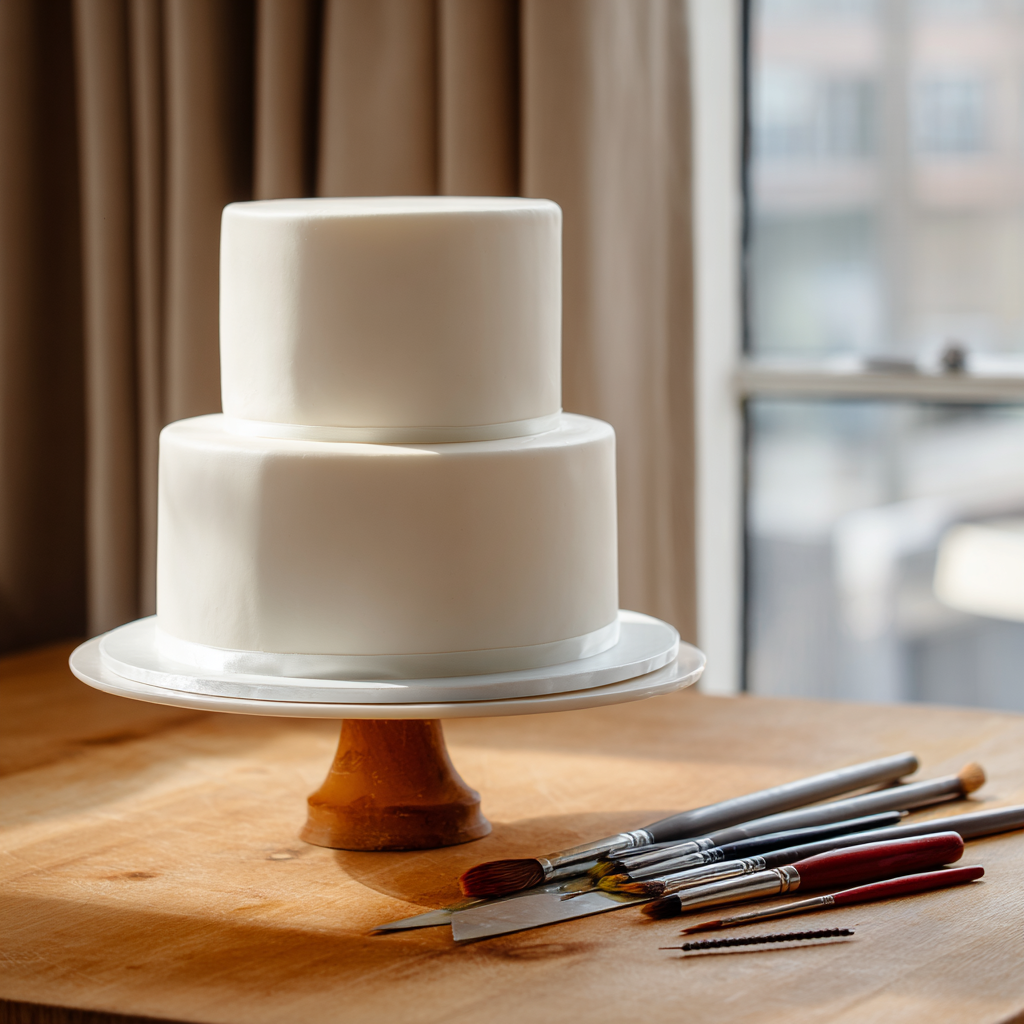I still remember the first time I tried to use fondant icing on a cake. It was my daughter’s birthday, and I had big Pinterest dreams—think unicorn horns, pastel swirls, and a perfect smooth finish. What I ended up with was a lumpy, cracked mess that looked more like a melted marshmallow than a masterpiece. But here’s the thing: fondant isn’t scary. It just takes a few tricks, a little practice, and knowing exactly what goes underneath.
In this guide, you’ll learn how to apply fondant icing the right way, what base you really need under it, how to make it stick without sliding off, and even how to make your own fondant from scratch. Whether you’re making a wedding cake, a fun character cake, or just playing around in the kitchen, this is your shortcut to a smooth, professional-looking finish.
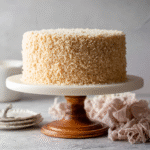
Fondant Icing on Cake: Smooth Tips, Sticky Tricks & What Really Works
- Total Time: 12 minutes
- Yield: 12 mins
Description
Smooth and easy fondant icing made from marshmallows. Perfect for covering cakes with a professional finish.
Ingredients
4 cups mini marshmallows
2 tablespoons water
4–5 cups powdered sugar
1 tablespoon shortening
Instructions
Microwave marshmallows and water in 30-second bursts until melted.
Stir in half the powdered sugar.
Grease hands and surface with shortening.
Knead in more sugar until smooth and pliable.
Wrap in plastic and rest for 1 hour before using.
Notes
Add food coloring or extract for flavor.
Dust surface with cornstarch to avoid sticking while rolling.
- Prep Time: 10 mins
- Cook Time: 2 mins
- Category: Cake Decorating
- Method: No-Bake
- Cuisine: American
Table of Contents
The Basics of Fondant Icing on Cake (Without the Cracks or Tears)
Can I Put Fondant Directly on a Cake?
The short answer? No, you shouldn’t put fondant icing directly on a cake—especially not if you want it to stay smooth and flawless. Fondant icing on cake needs a base layer to stick to, otherwise it pulls moisture from the sponge, starts to sag, and can even crack or wrinkle. It’s like putting a bedsheet on a mattress with no padding—it just doesn’t work right.
The best way to apply fondant icing on cake is to first coat it with buttercream, ganache, or a thin layer of jam. This helps the fondant adhere while smoothing out any crumbs or imperfections. Buttercream is my go-to for most designs, especially when I need a sturdy hold without overpowering sweetness. Just chill the cake after applying buttercream to give the fondant a stable base.
Whether you’re baking a tall tiered cake or something simple for practice, this step is non-negotiable. Skip this step, and you’ll probably notice bubbling or sagging in just a few hours. Believe me, I’ve learned that lesson the sticky way.
And if you’re still building confidence before going full fondant, something simpler like funfetti cake cupcakes is a fun way to stay in your baking groove without the pressure of full coverage fondant work.
What Goes Under Fondant Icing on a Cake?
This is one of the most important things to get right when working with fondant icing on cake. You want a base that’s smooth, firm, and not too wet. Here are the best options:
- Buttercream: Easiest to apply, smoothes well, and works great under fondant
- Ganache: More advanced, but gives a super clean, polished finish
- Apricot Jam: Common in traditional European cakes like fruitcake
- Swiss Meringue Buttercream: Lighter than American, but still stable if chilled
You’ll want to avoid whipped cream or cream cheese frosting—both are too soft and cause the fondant to slip or melt. Fondant icing on cake relies on that first layer being cold but not frozen, so it grips but doesn’t get condensation.
When I started out, I tried skipping the chill step and rushed straight into decorating. The result? A gooey fondant disaster that slipped right off. Always let the cake rest in the fridge after your base layer—at least 20–30 minutes—before applying fondant.
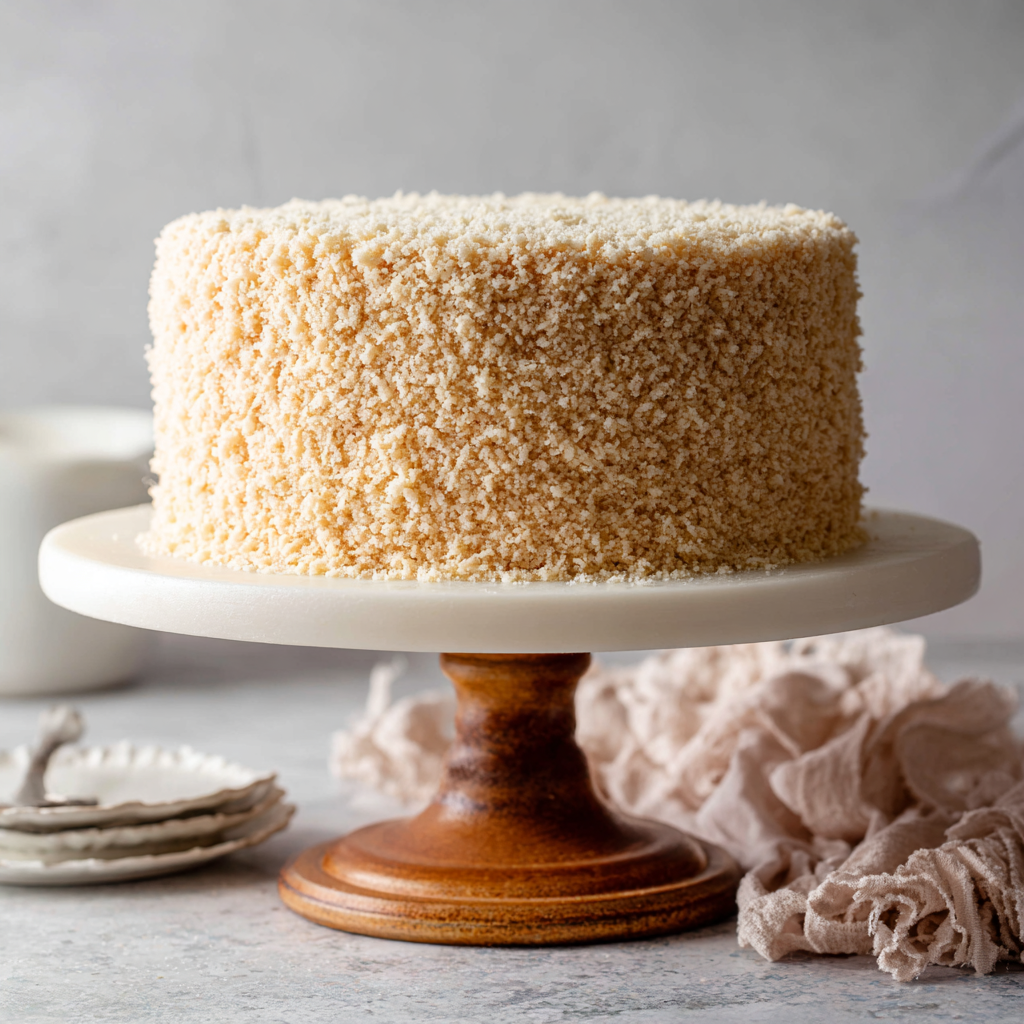
For More Recipes :
How to Get Fondant Icing on Cake to Stick and Stay Smooth
How Do You Get Fondant Icing to Stick to a Cake?
Getting fondant icing on cake to actually stay on the cake can feel like the ultimate test of patience. But here’s the deal: it’s all about what you put underneath and how you prep the surface. You want a slightly chilled layer of buttercream or ganache—firm, but not frozen. This creates the perfect tacky texture that helps fondant grab on and hold its shape.
This is the exact method I use whenever I want fondant icing to stick firmly to a cake:
Apply a thin crumb coat of buttercream
Chill the cake for 30 minutes
Add a second, smooth layer of buttercream
Chill again, but let it come to just cool—not rock solid
Lightly spritz the surface with water or sugar syrup before applying the fondant.
That tiny bit of moisture creates just enough stickiness for the fondant to attach without sliding. If you skip this step, you risk bulging sides or sagging edges—especially in warmer kitchens.
Fondant icing on cake can look professional even if you’re not a pro baker. I always recommend beginners start with a simple one-layer cake to practice these steps. Even if you mess up a little, you’re building the skills to go bigger next time.
And when I’m prepping cakes for back-to-back birthdays and need a dinner shortcut, I usually rely on something like Healthy Walmart Meals to keep things simple without leaving the kitchen chaos behind.
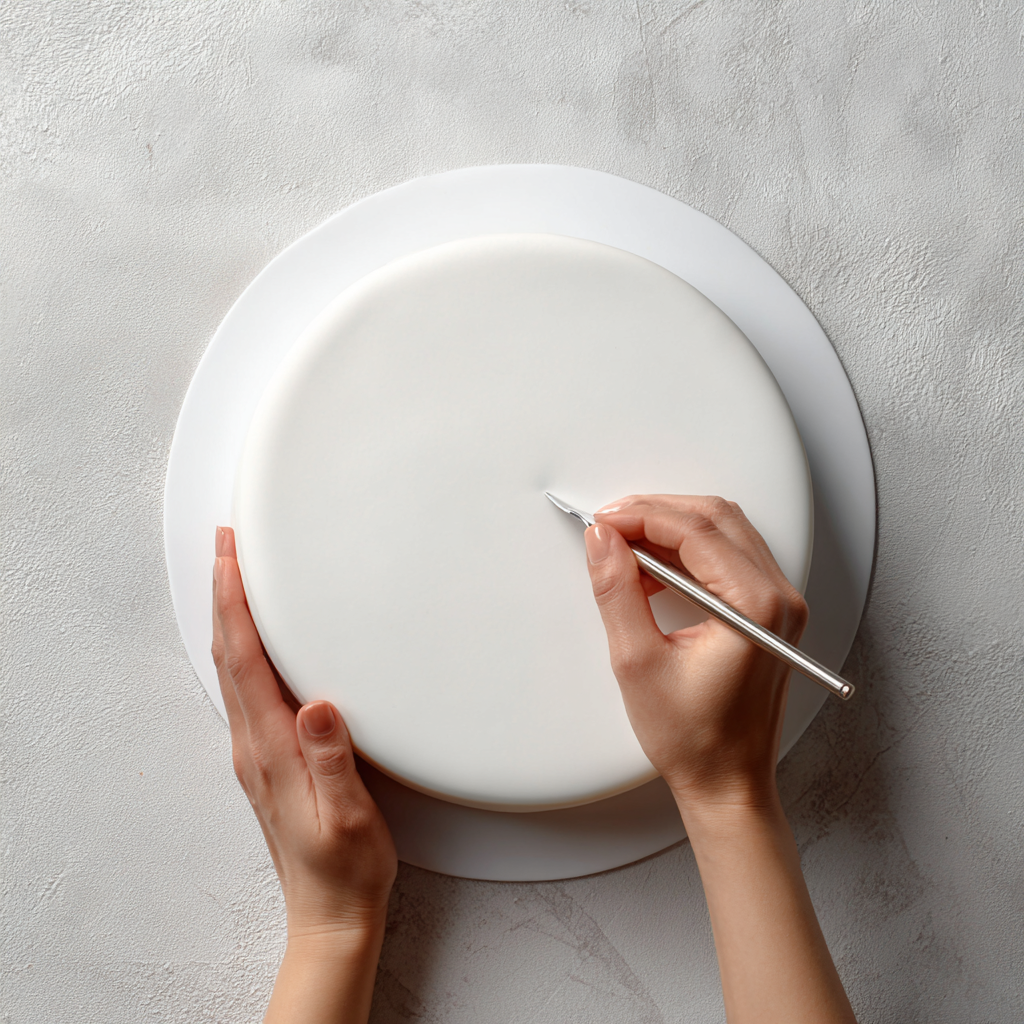
Tools That Make Working with Fondant Icing on Cake Easier
The right tools can make all the difference. If you’re trying to smooth fondant icing on cake with your bare hands or a kitchen spoon—no wonder it’s not going well! You don’t need a ton of fancy gear, but a few cake decorating basics will take your fondant work from wrinkled to flawless.
Here’s what I always keep on hand:
Fondant Smoother: Useful for eliminating air bubbles and creating clean, sharp edges.
Nonstick Rolling Pin: Prevents the fondant from tearing or sticking
Pizza Cutter or X-Acto Knife: Great for trimming clean edges around the base
Turntable: Allows smooth rotations while applying or adjusting fondant
Cornstarch or Icing Sugar: A little dust keeps it from sticking to your surface
Make sure to knead the fondant until it’s soft and easy to work with before rolling it out. Cold or stiff fondant will crack or tear. And don’t skip dusting your surface lightly—if the fondant sticks, stretching and uneven patches follow quickly.
Making Your Own Fondant Icing and Fixing Common Cake Disasters
How to Make Icing Fondant for Cake at Home
You don’t have to buy a tub of ready-made fondant every time you want to decorate a cake. In fact, homemade fondant icing on cake often tastes better and is easier to work with—plus, it’s way more affordable.
Here’s a simple way to make fondant icing at home using marshmallows:
Ingredients:
4 cups mini marshmallows
2 tablespoons water
4–5 cups powdered sugar (sifted)
1 tablespoon shortening (for kneading)
Steps:
Heat the marshmallows with a splash of water in the microwave, using 30-second intervals, until completely melted.”
Stir in half the powdered sugar.
Grease your hands and work surface with shortening.
Turn the mixture out and knead in more sugar until smooth.
Wrap tightly in plastic and let rest for 1 hour before using.
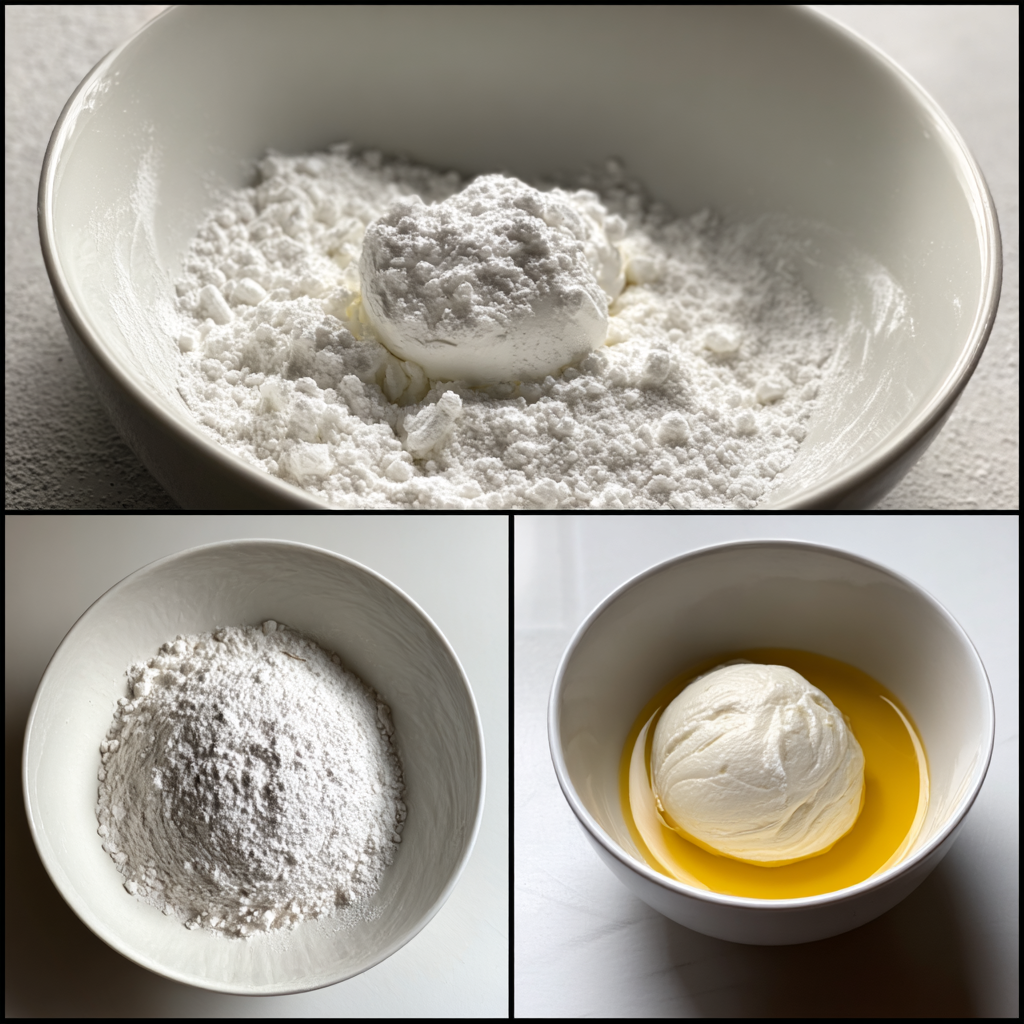
This version of fondant icing on cake is stretchy, smooth, and a bit tastier than the store-bought kind. It rolls out beautifully and covers cakes without much cracking. You can add food coloring or flavored extracts too—like almond or lemon—for a twist.
It’s a great option when you want to decorate but don’t want to make an extra trip to the store. And once you get the hang of it, customizing fondant becomes just as fun as decorating the cake itself.
If you enjoy hands-on kitchen projects like this, you might also like oatmeal how-to tutorials—simple, comforting recipes that make home cooking feel fun and relaxed.
Troubleshooting Fondant Icing on Cake: Cracks, Bulges & Stickiness
Even with the best preparation, fondant icing on cake can still go sideways. Cracks around the edges, bulging sides, or sticky hands? We’ve all been there. But here’s how to fix it before the whole thing falls apart.
Problem #1: Cracks on the surface
This usually means your fondant is too dry. Try kneading in a little shortening to bring back elasticity. If cracks appear while smoothing, gently rub with a drop of water or steam the surface lightly with a steamer.
Problem #2: Bulges or bubbles under the fondant
These come from trapped air or soft buttercream. Gently press out any air pockets with a fondant smoother. If one won’t budge, use a pin to poke a tiny hole, then smooth it out.
Problem #3: Fondant sticks to everything
If your hands or surface are too warm, fondant becomes sticky. Dust your counter with powdered sugar or cornstarch to stop it from grabbing.
Problem #4: Fondant tearing when applied
This means it was rolled too thin or got too warm. Aim for 1/8-inch thickness and work quickly. Always knead well before rolling.
Real Answers to Fondant Icing on Cake Questions (You Asked, We Answered)
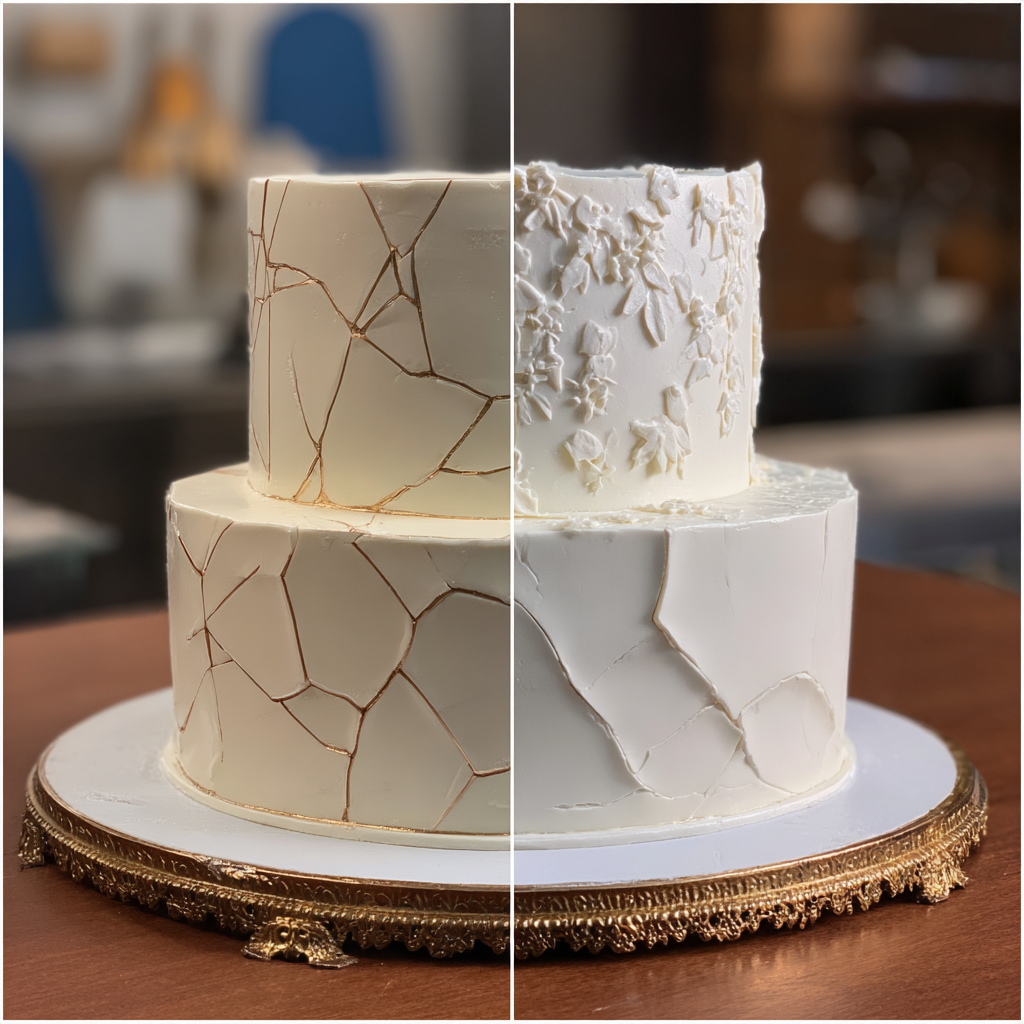
Can I Put Fondant Directly on a Cake?
You can, but you really shouldn’t. Putting fondant directly on a cake—especially a soft one—will usually lead to a sticky mess. Fondant icing on cake needs a buffer layer, like buttercream or ganache, to help it grip and stay in place. Skipping that step almost always leads to sagging fondant, surface bubbles, or sugar pulling moisture from your cake.
What Goes Under Fondant Icing on a Cake?
The most common base under fondant icing on cake is buttercream, followed closely by ganache. These create a smooth, chilled surface that holds the fondant evenly. You want a firm but slightly tacky feel. Avoid whipped cream or loose fillings—they can melt under the fondant or cause it to slide.
How Do You Get Fondant Icing to Stick to a Cake?
Start with a chilled cake covered in buttercream. Once set, apply a light mist of water or sugar syrup to make the surface slightly sticky. Then, gently lay your rolled fondant over the cake, smooth the top, and work your way down the sides with a fondant smoother.
How to Make Icing Fondant for Cake?
It’s surprisingly simple! You can make fondant icing at home using mini marshmallows, powdered sugar, and water. Melt the marshmallows, stir in sugar, knead with shortening, and let it rest for an hour. You’ll end up with a stretchy, moldable fondant that covers cakes beautifully.
Conclusion
Whether you’re covering a wedding cake or decorating your kid’s birthday dessert, mastering fondant icing on cake comes down to preparation, patience, and practice. With the right base, tools, and a little know-how, you’ll avoid sagging layers and sticky hands—and start creating cakes that look as good as they taste.
Want more recipes, shortcuts, and creative food ideas? Head back to the Meal Easy Todo homepage where you’ll find even more tips, tricks, and real-life kitchen inspiration.

